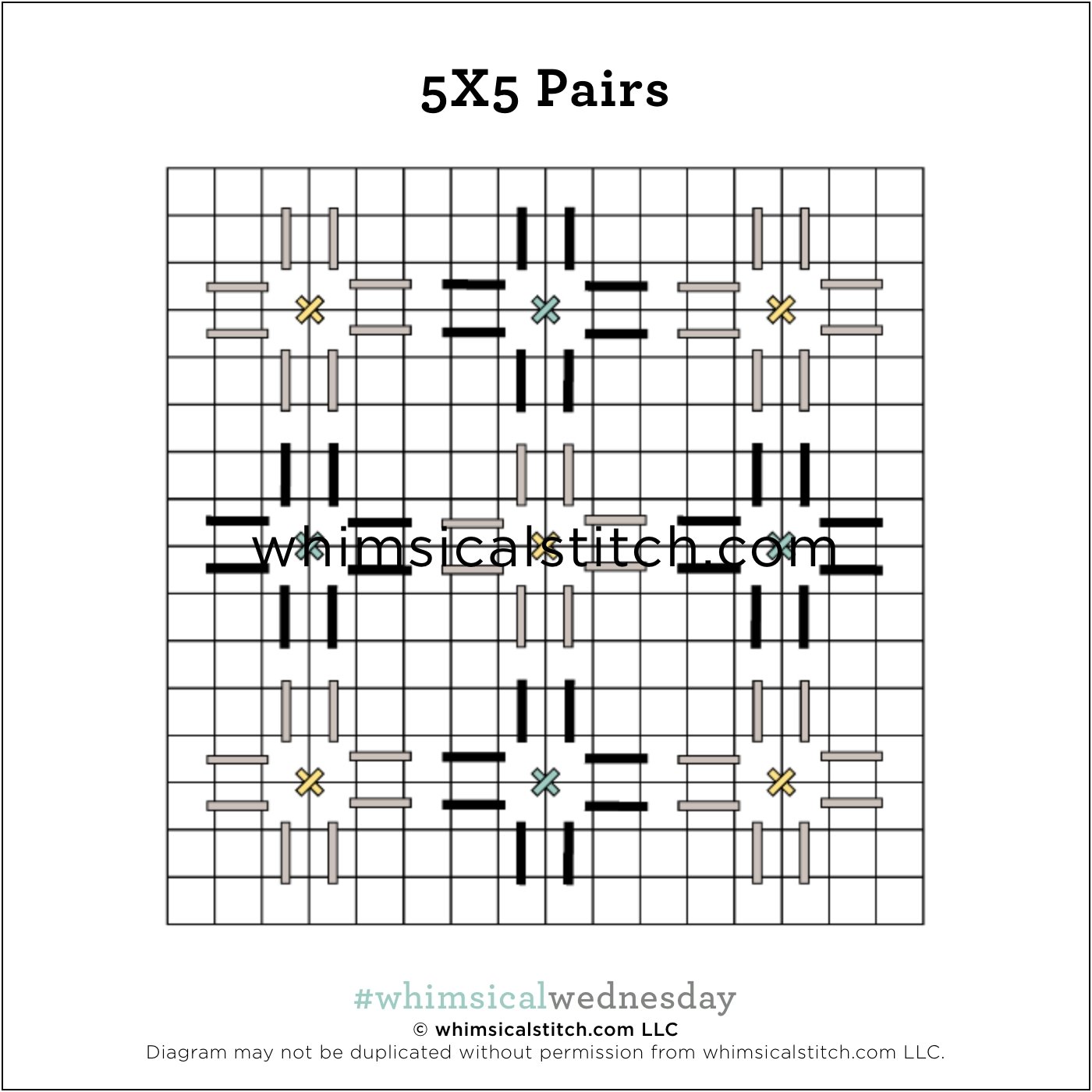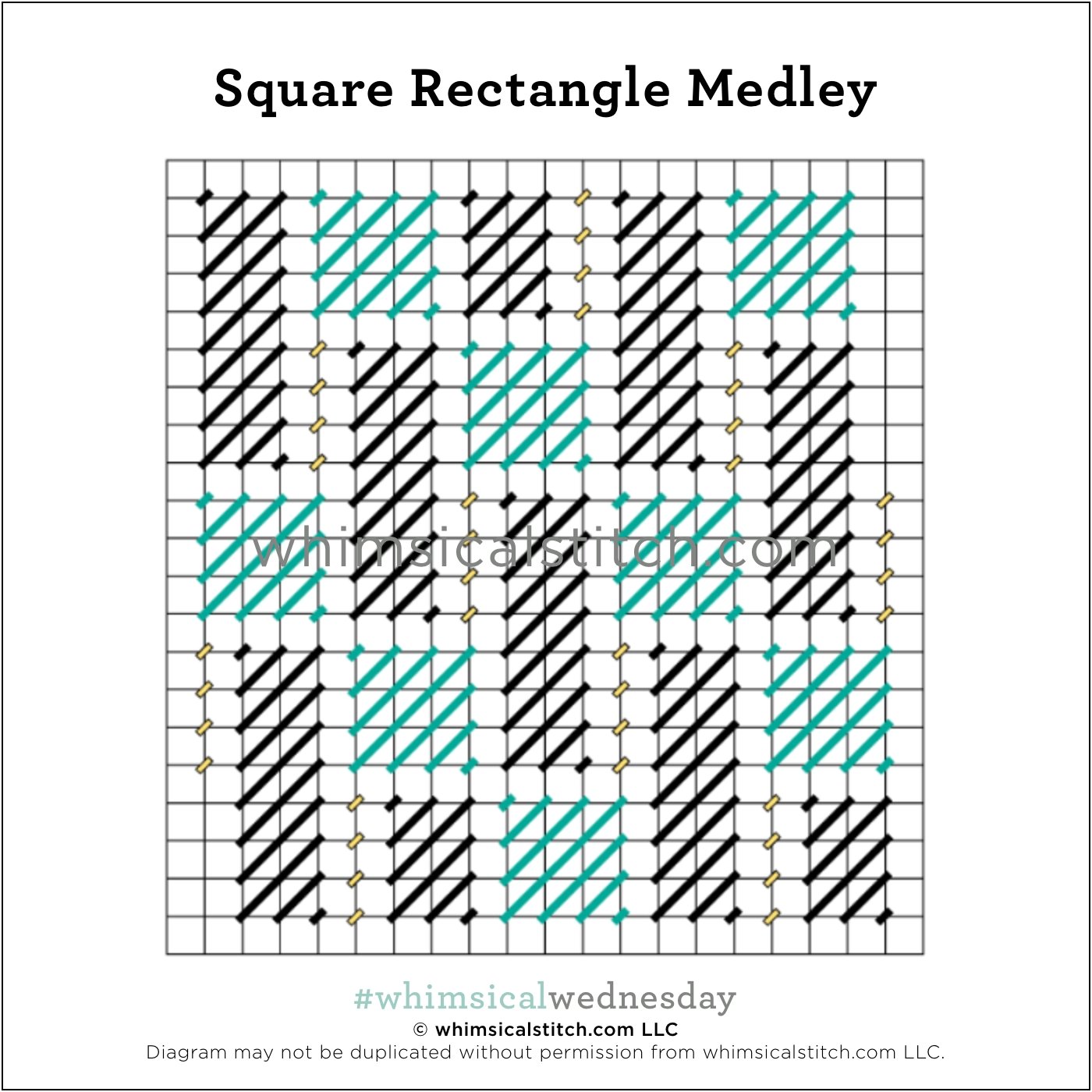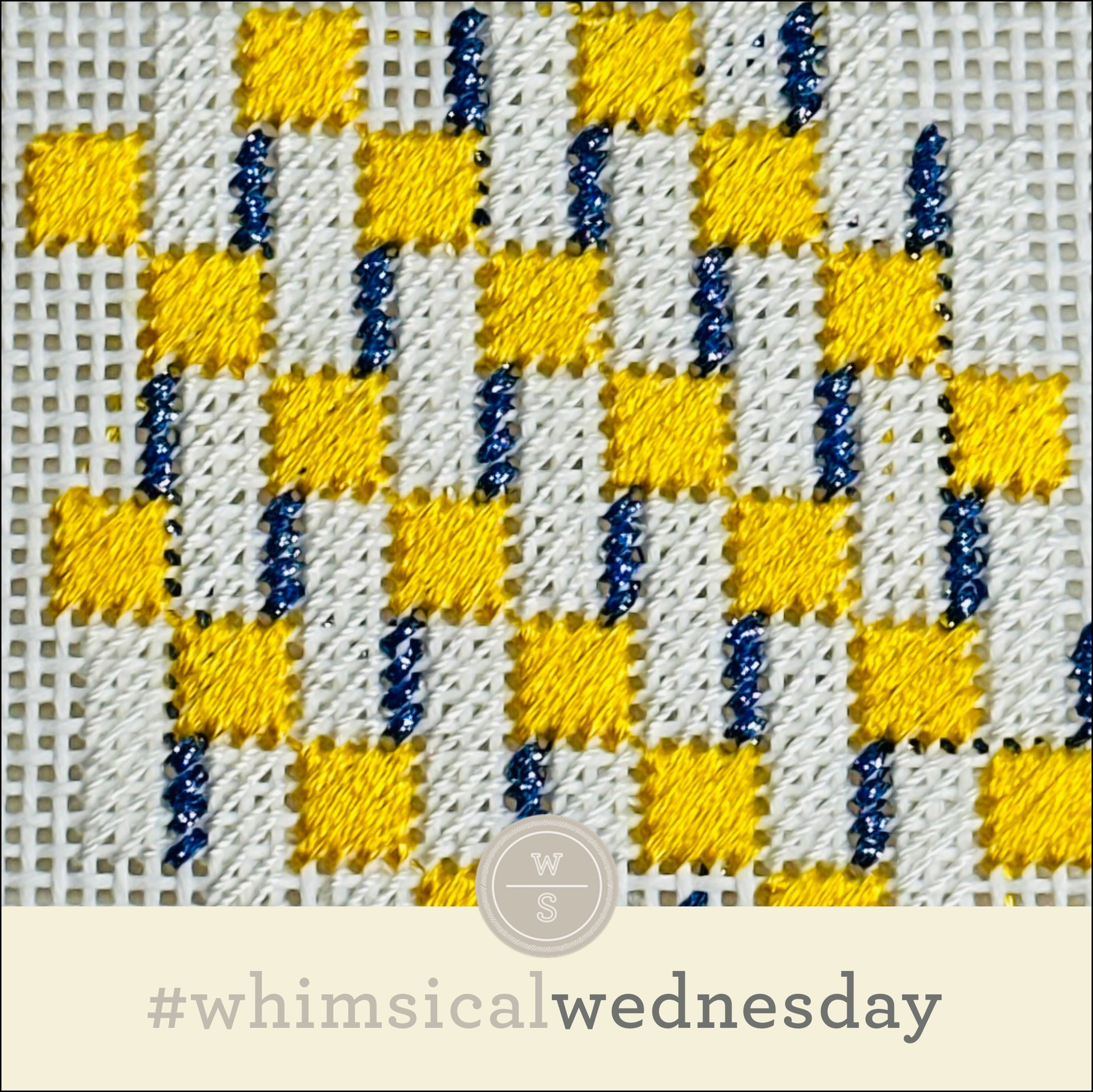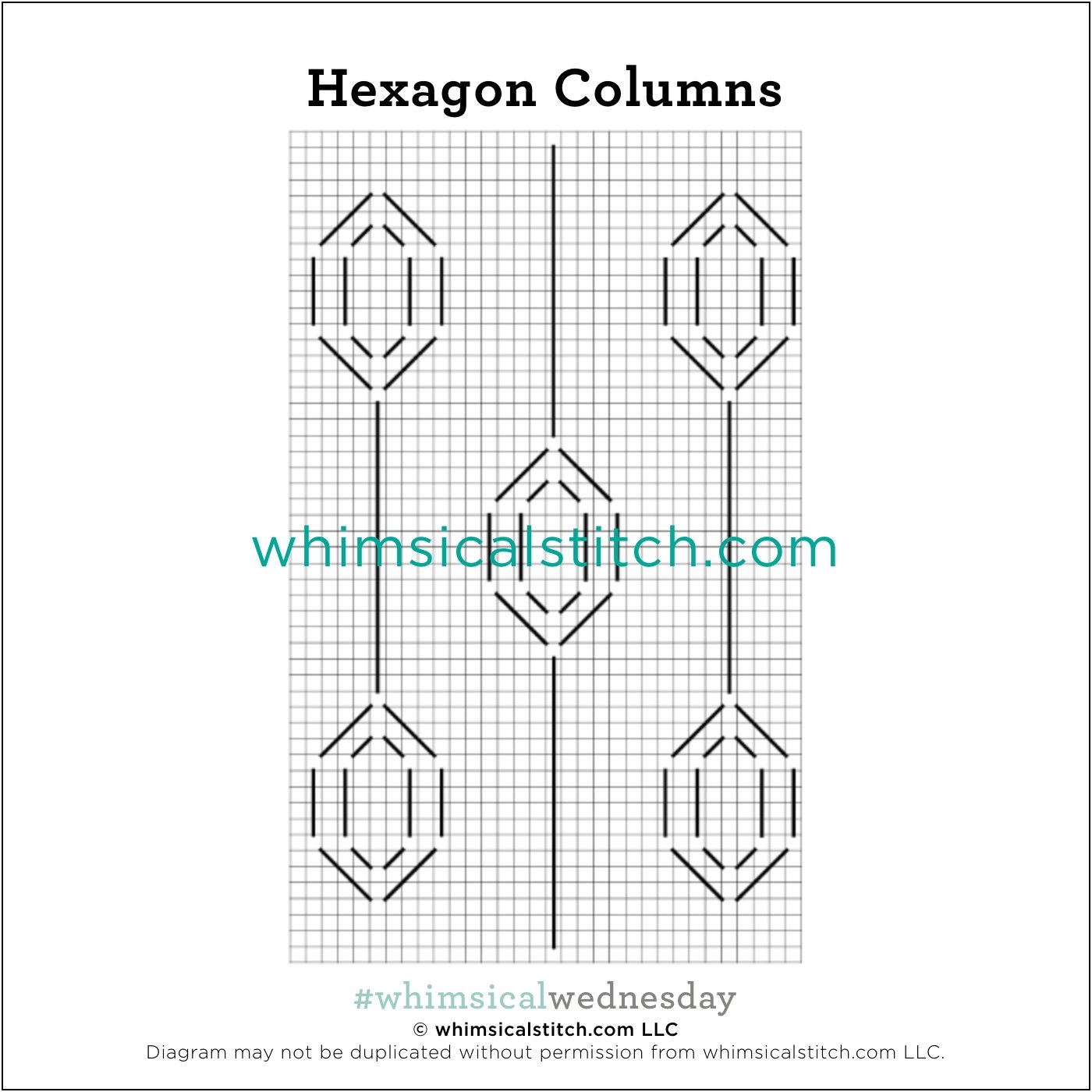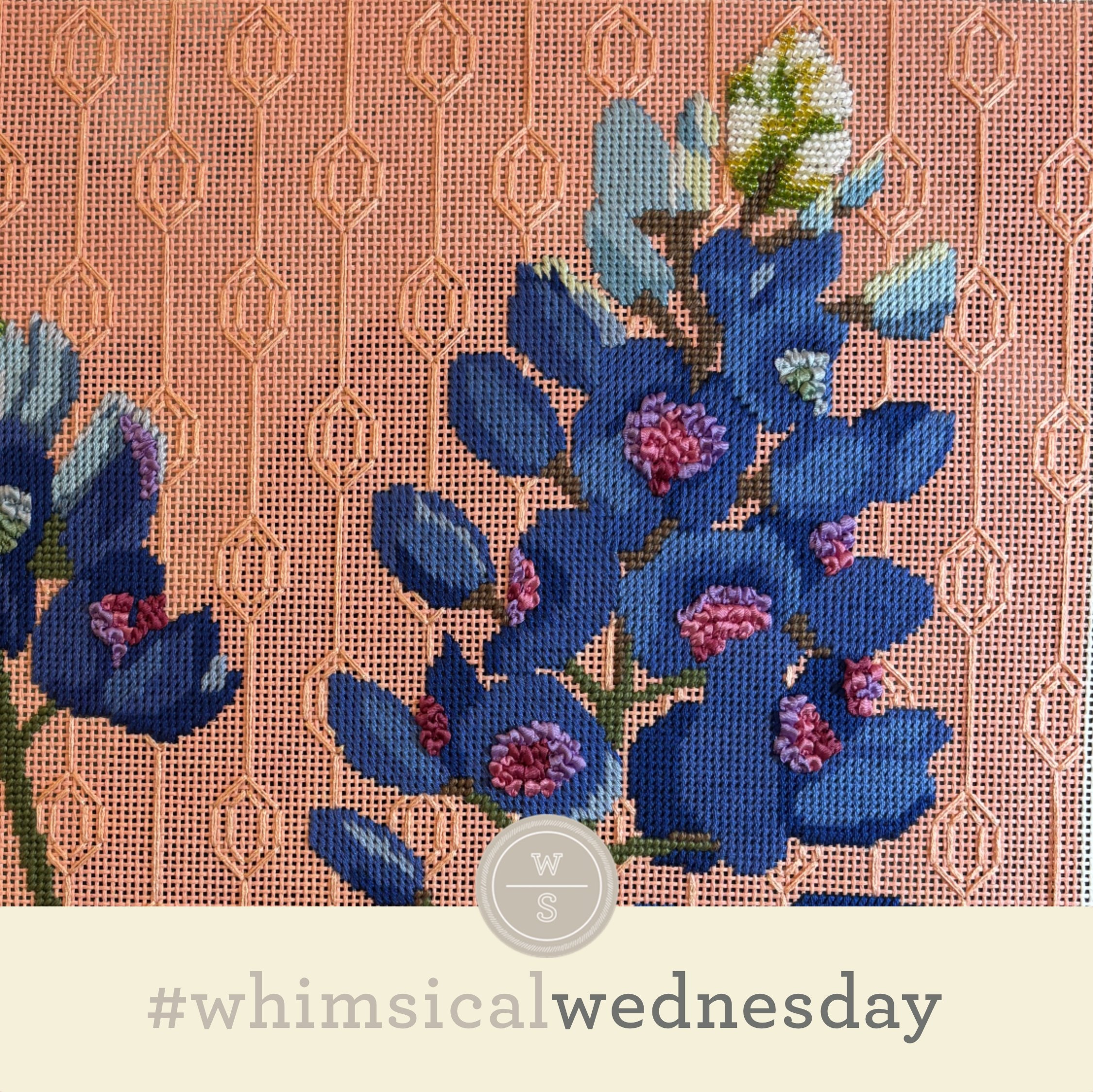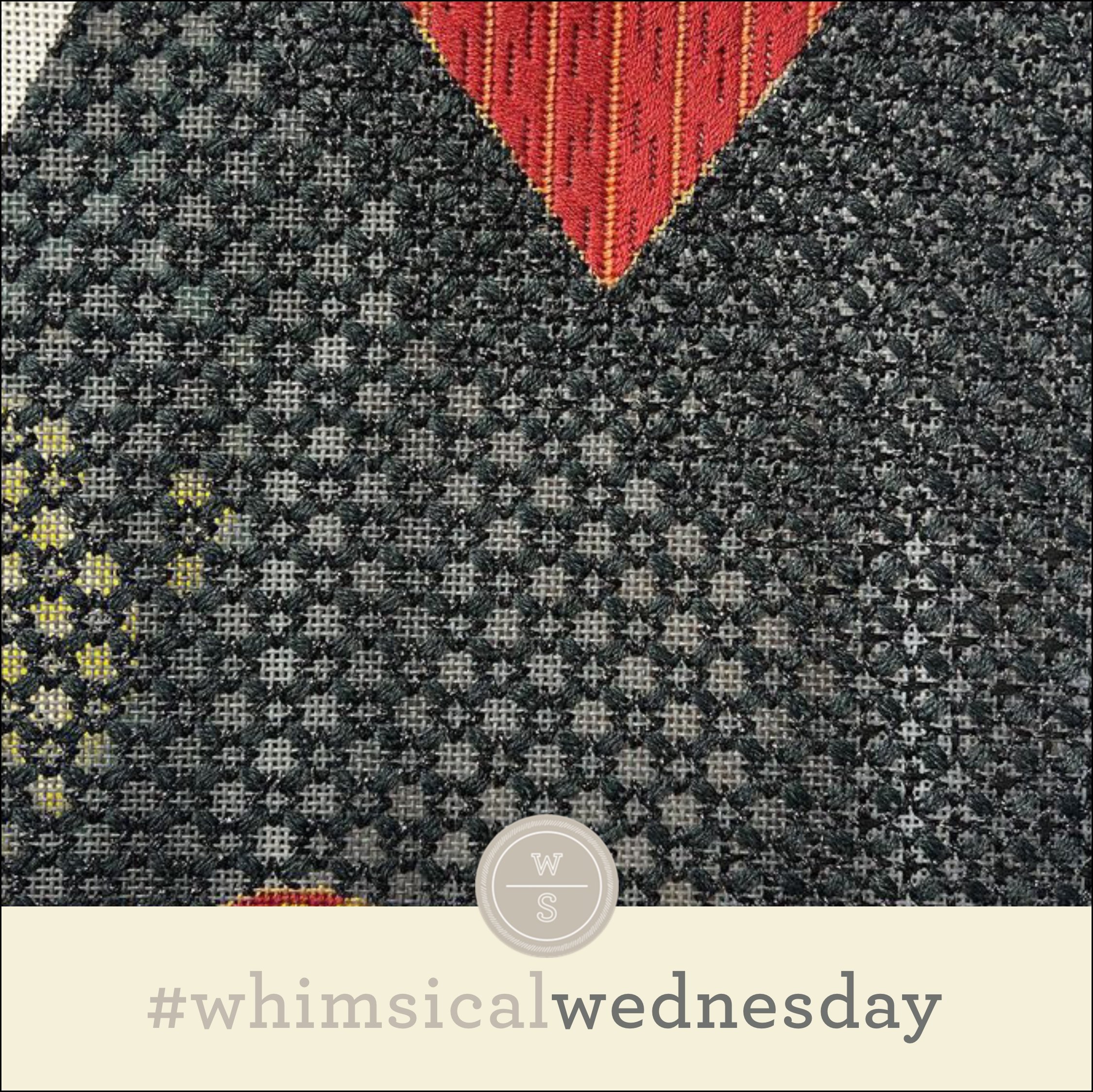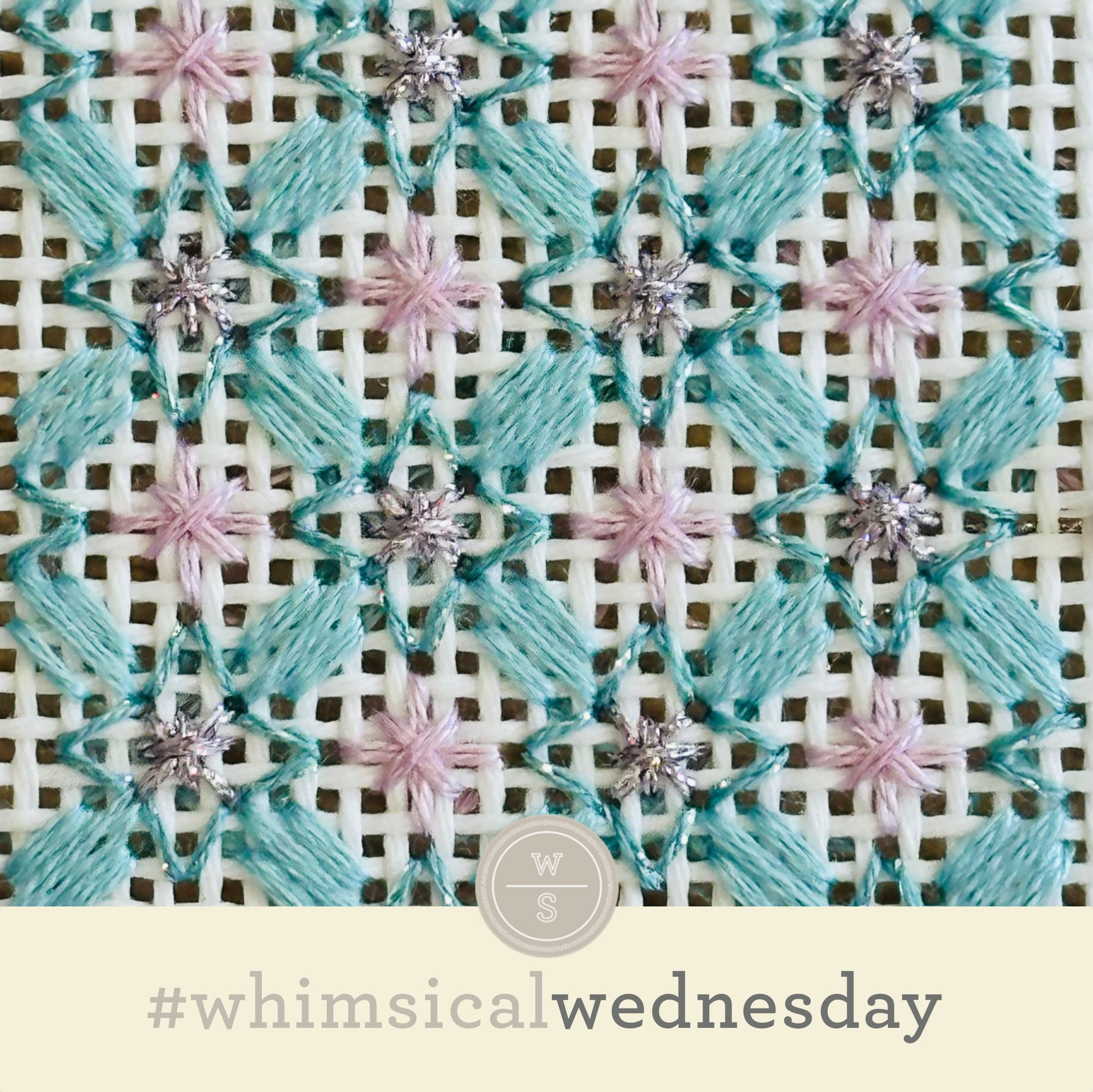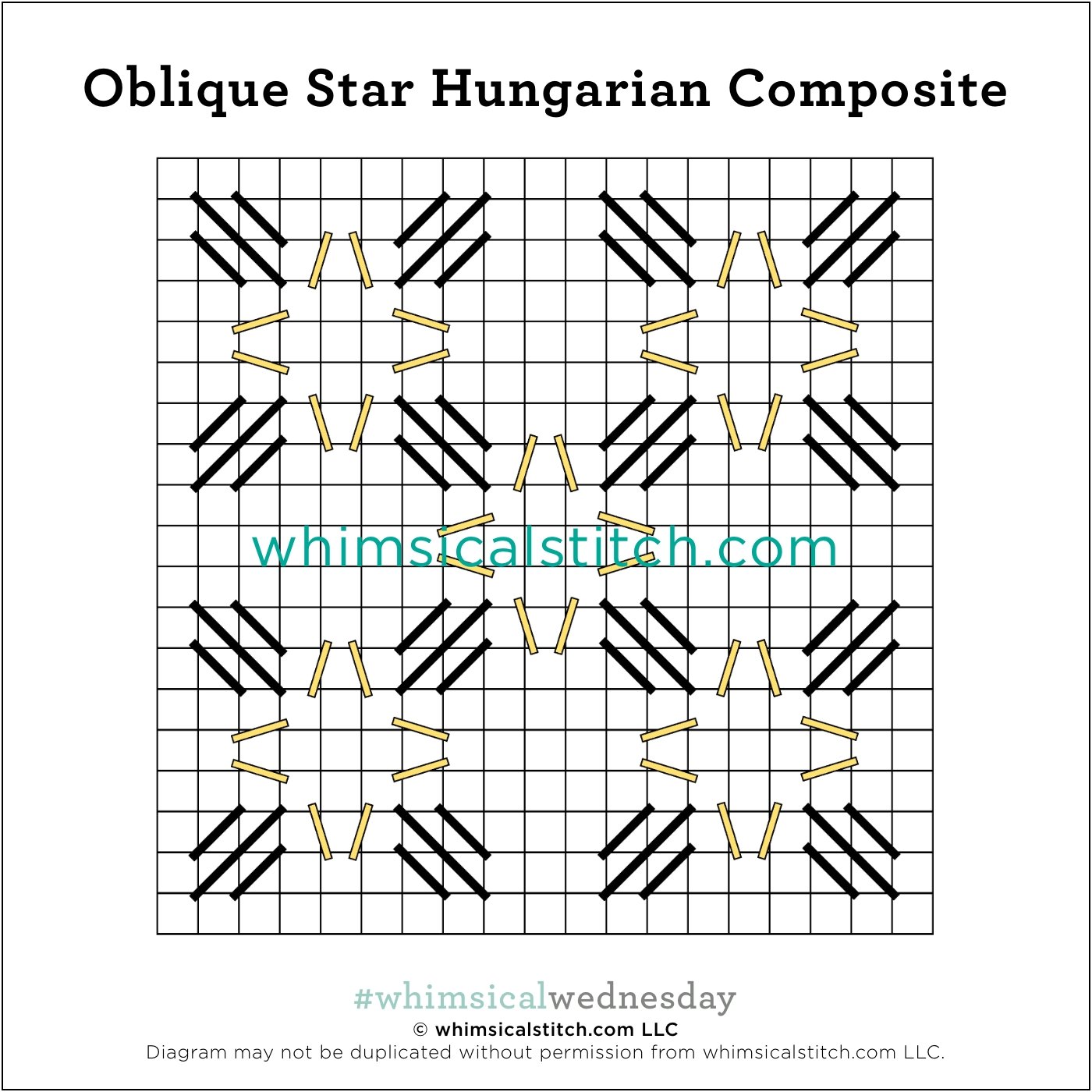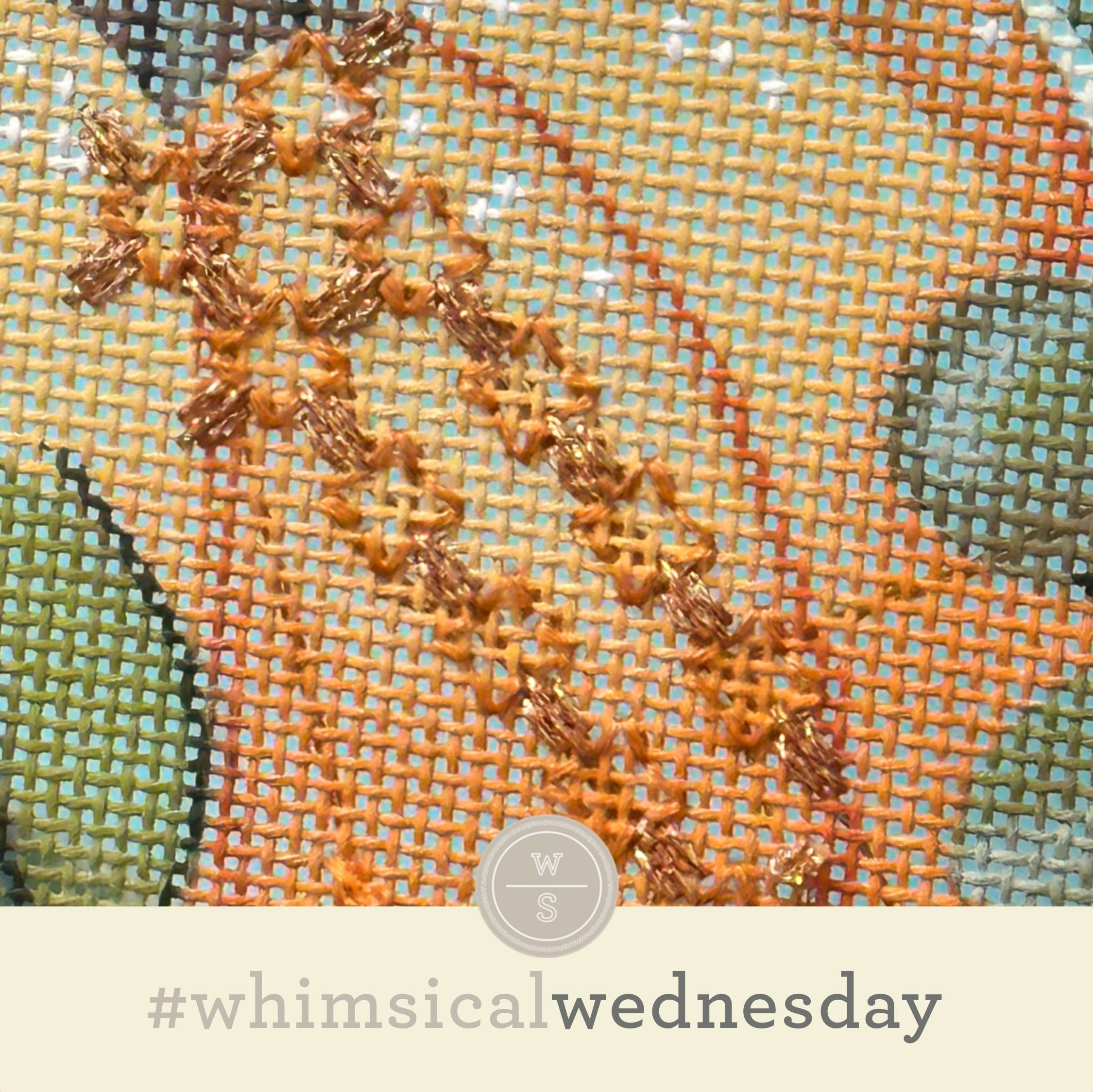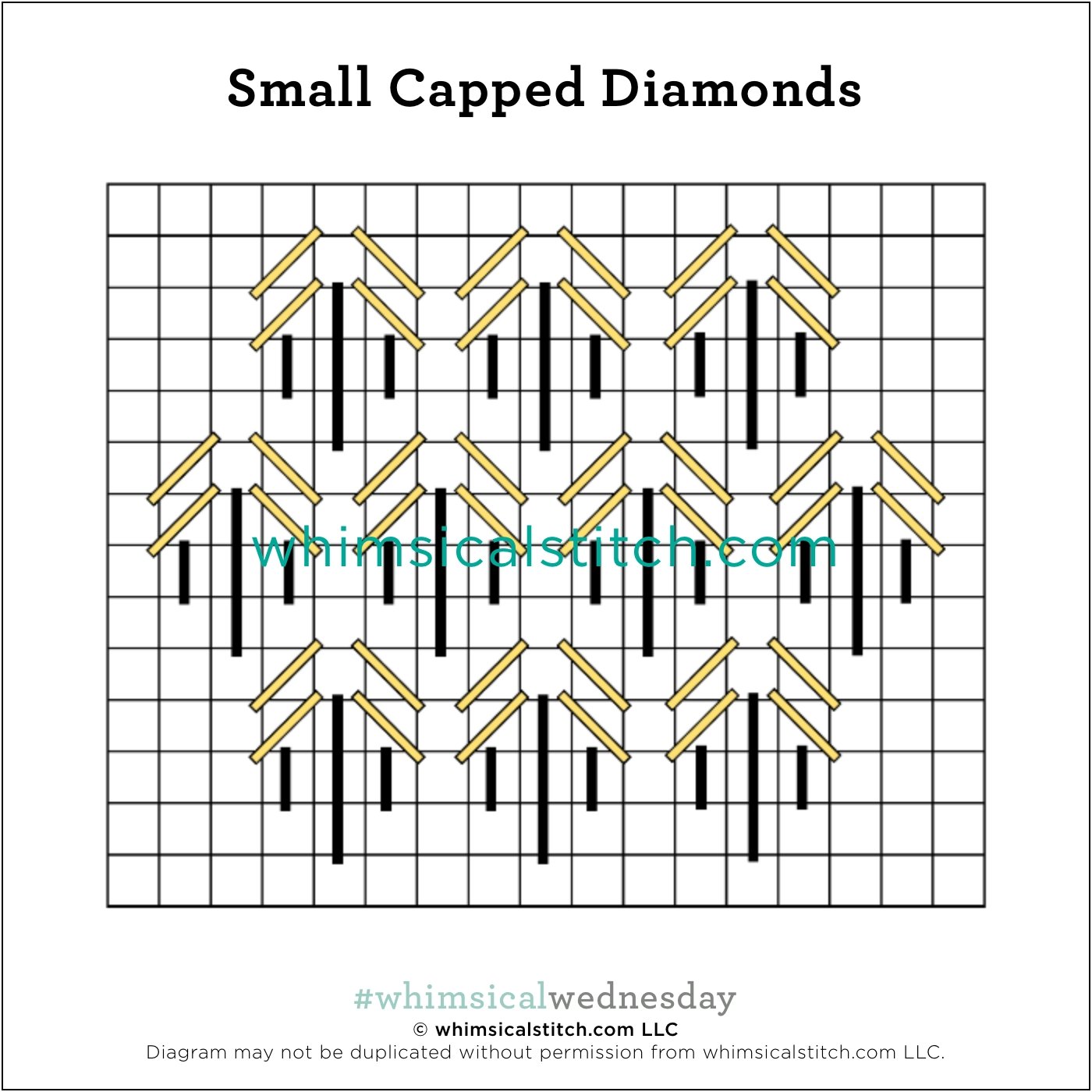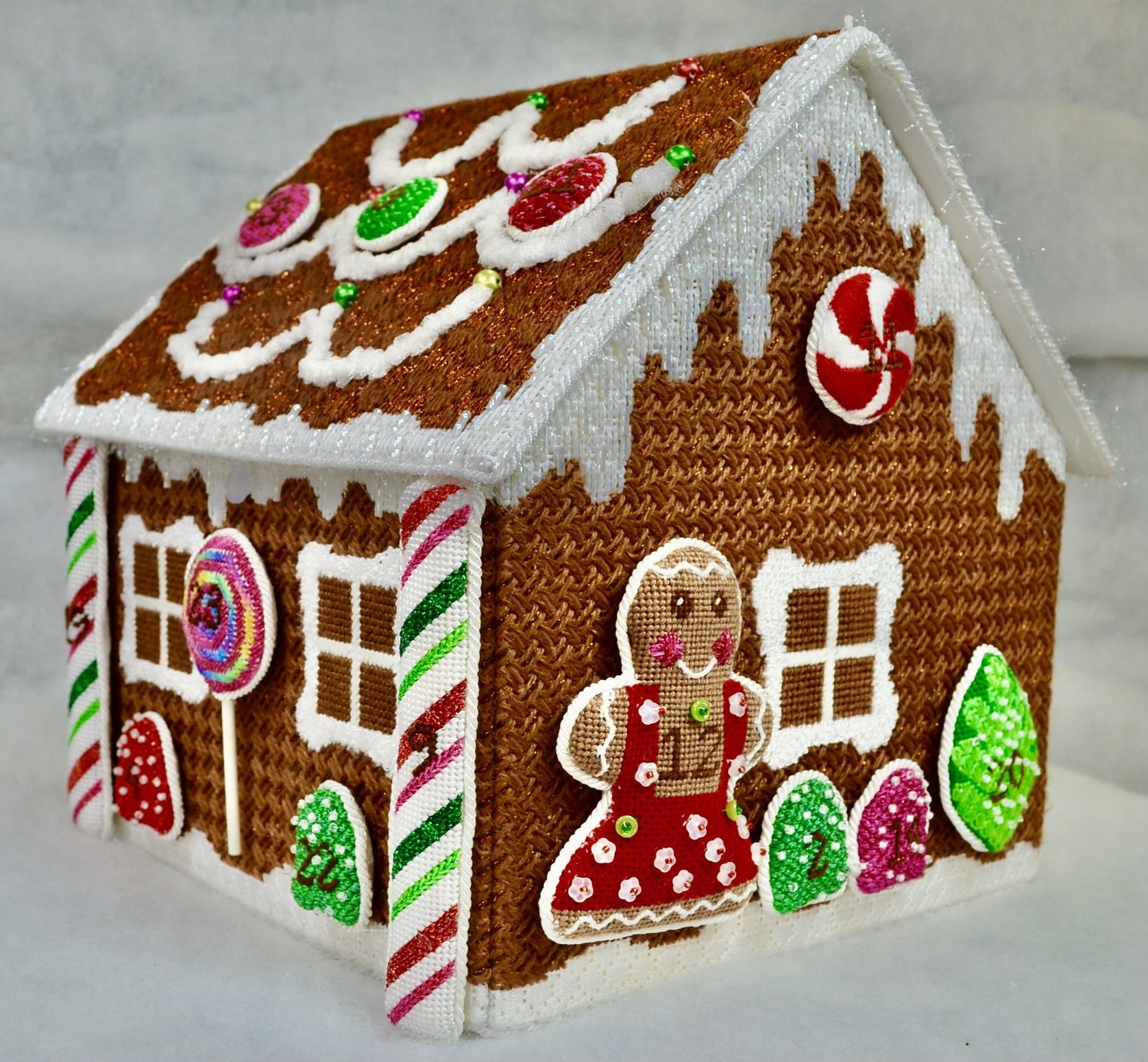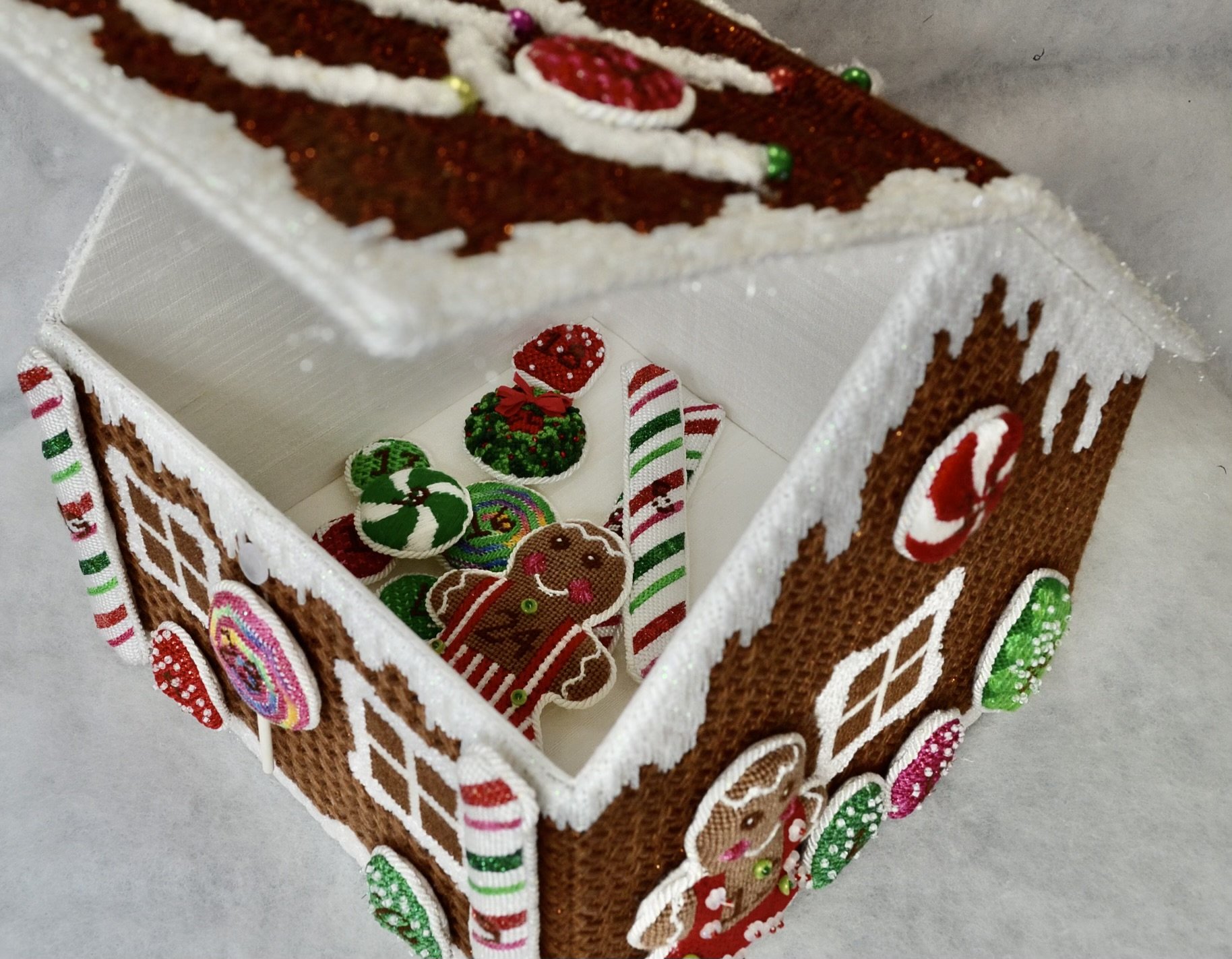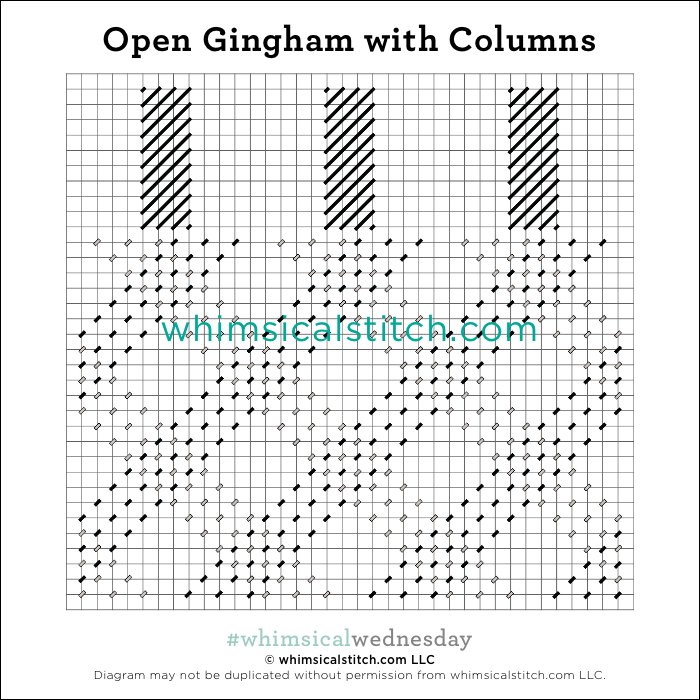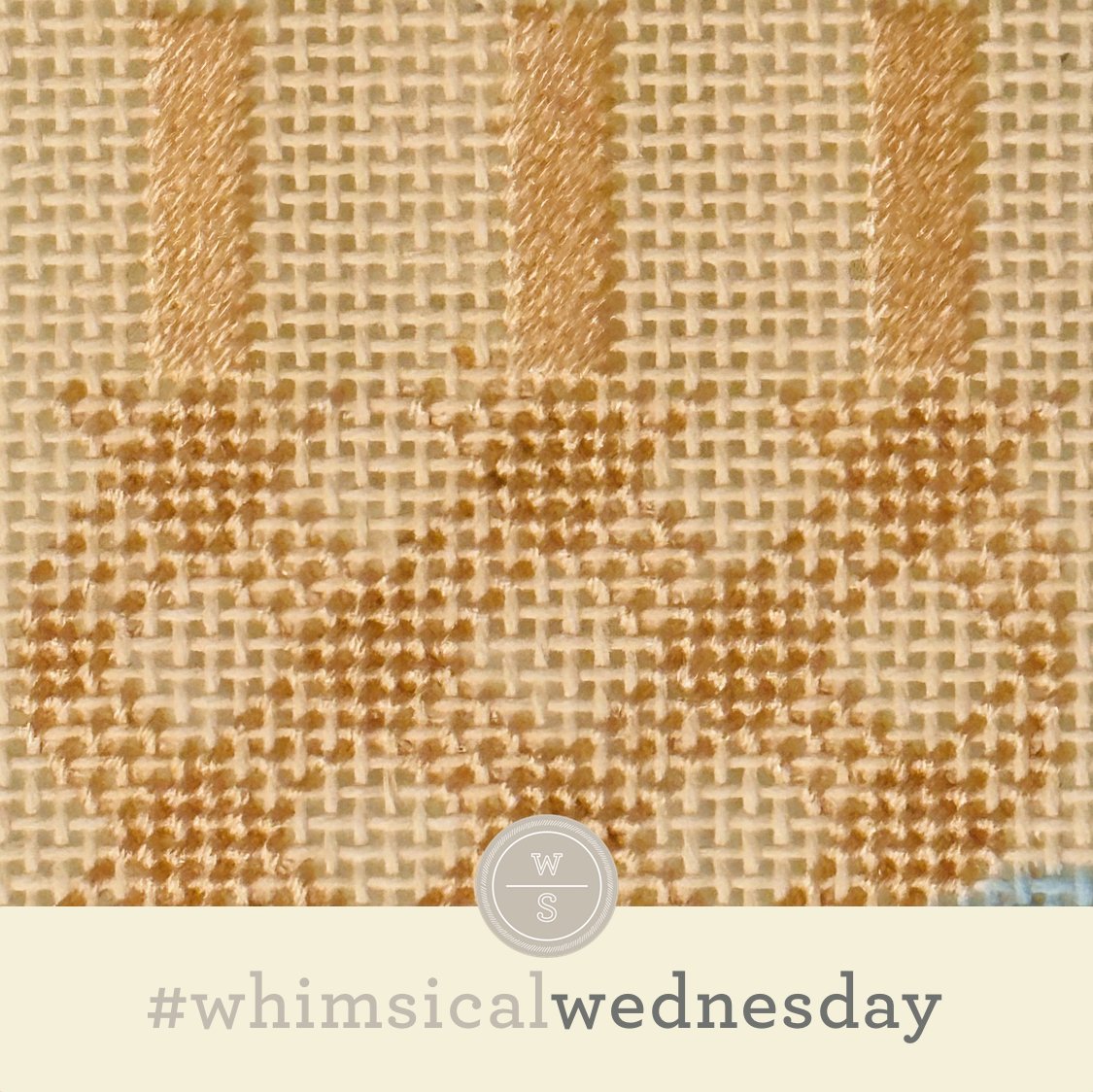I am always shocked at the weird things I recall in a nanosecond, yet my memory for names is almost shot. As I started to ponder what to do for the 5X5 squares on the roof in today’s stitched sample, I instantly recalled that the stitch I landed on was NOT included in the post I did on 5X5 squares almost seven years ago.
Fun fact. Blog posts in January 2016 were dedicated to all things square. 3X3, 6X6, 4X4, 2X2, and 9X9. (All of those stitches are now in the first volume of my book.) It was a great challenge, especially the 3X3 squares.
Today’s stitched sample is the roof of a house in a winter village by Melissa Shirley. I used Soie d’Alger for the black lines, a matching Kreinik for the turquoise lines, a DMC cotton floss for the gray lines, and a second matching Kreinik for the yellow lines. Some of you may question why I used Soie and cotton floss in the same area. The answer is simple. The cotton floss was a better match. Regarding thread matching, it almost always boils down to color. The lighter green Soie was already being used in a different area, so I knew I had to find a floss of some kind for the second green color.
Squares are always great all-purpose stitches, especially for architectural elements including roofs, walls, or floors. If you are looking for a heavier effect, say for a floor, consider two shades of Vineyard Silk with a Silk Lame 18 for the cross stitch accent. I think it will also make a beautiful vase with a lightweight metallic, such as Petite Silk Lame, for the gray and black lines and a seed bead or a faux pearl for the accent in the center.
Have fun with it!
As you are auditioning stitches (from any stitch source), count the number of canvas threads on the diagram that match your mesh size. And there you have what an inch of the stitch will look like. Evaluate that against the area where you plan to use the stitch and make your final decision. If you start integrating this step into your stitch selection process, you may be surprised at how many stitches you think are large are much smaller than you realize.
By (sometimes) including this step in my own process, I find I am now integrating much longer stitches than I ever thought I would. I used to think a stitch six rows long was super big. I have very much changed my tune, which has helped me expand my creativity, especially for large-space stitches.
Today’s stitch diagram, along with all other #whimsicalwednesday and #smallspacesunday stitch diagrams, can also be found on a Pinterest board here. Be sure to follow whimsicalstitch.com on Facebook, Pinterest, Instagram, and Twitter.
If you like what you see on this blog, there's more. Mary’s Whimsical Stitches is a series of four books offering contemporary how-to collections of more than 200 stitches (in each volume) for all stitchers, regardless of skill level. All books include updated and sequenced diagrams from this blog, plus a collection of all-new stitches from private lessons and other class projects. Visit here to find a needlepoint retailer that carries my books.
New to needlepoint or looking for a refresher? Please download a handy how-to guide covering basic needlepoint stitches and stitch compensation techniques along with new top-line information on needlepoint materials and tools, how to handle threads, and other helpful needlepoint resources.
whimsicalstitch.com also sells Stitch Guides and Stitch Concepts for Melissa Shirley Designs, Zecca Designs, Sandra Gilmore, Purple Palm, Maggie, and Penny MacLeod, and many more. Click here to see the newest guides and click here to see the entire collection.
I hope you have the perfect spot for this stitch! Please enjoy! Have a wonderful #whimsicalwednesday!
A Note about Diagrams
I use color in diagrams to make them as clear as possible. The primary function of different colored lines is to illustrate a stitch sequence. For example, the layering of colors demonstrates you add them in that order. They can also provide ideas on integrating additional threads (one line for each color). Or, you can use the same thread for all color lines. That's where I encourage you to use your imagination for the space you are stitching!


